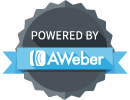
In the digital era, safeguarding external connections stands as a cornerstone for businesses aiming to protect their assets and maintain trust with their users. Application gateways are central to achieving this goal, which are pivotal in fortifying the barrier between external entities and internal networks. This article will explore a comprehensive guide outlining the best practices for bolstering security through application gateways.
Understanding Application Gateways
Before delving into the best practices, let’s establish a clear understanding of application gateways. These gateways, also referred to as application-level gateways or application proxies, operate at the application layer of the OSI model. Their primary function is to serve as intermediaries between clients and servers, meticulously inspecting and filtering traffic based on predefined rules. When securing external connections with application gateways, Kubernetes Ingress can efficiently route traffic and manage access to services within Kubernetes clusters, enhancing overall security measures.
Best Practices for Securing External Connections with Application Gateways
1. Implement Robust Authentication Mechanisms
A pivotal step in securing external connections involves implementing robust authentication mechanisms. Application gateways should support a variety of authentication methods, including multi-factor authentication (MFA), OAuth, and certificate-based authentication. This ensures that users are required to authenticate themselves before gaining access, significantly reducing the risk of unauthorized entry.
2. Utilize SSL/TLS Encryption
Encrypting data in transit is imperative to shield sensitive information from potential threats. Application gateways should fully support SSL/TLS encryption to establish secure connections between clients and servers. Additionally, regular updates of SSL/TLS certificates and adherence to encryption best practices are essential for mitigating security risks effectively.
3. Enforce Access Control Policies
Access control policies serve as the backbone of security measures, delineating who can access specific resources and the actions permitted. Application gateways should enforce granular access control policies based on user roles, groups, IP addresses, and contextual factors. Organizations can thwart unauthorized access attempts and mitigate potential breaches by restricting access exclusively to authorized users and resources.
4. Enable Web Application Firewall (WAF) Protection
Web Application Firewalls (WAFs) play a crucial role in safeguarding web applications against prevalent security threats such as SQL injection, cross-site scripting (XSS), and distributed denial-of-service (DDoS) attacks. Configuring application gateways to enable WAF protection and regularly updating firewall rules are imperative steps in countering emerging threats effectively.
5. Integrate Intrusion Detection and Prevention Systems (IDPS)
Intrusion Detection and Prevention Systems (IDPS) function as vigilant guardians, continuously monitoring network traffic for signs of suspicious activities. Seamless integration of IDPS solutions with application gateways enables real-time detection and prevention of malicious traffic. Organizations can swiftly identify and mitigate security incidents by conducting thorough monitoring and analysis.
6. Regularly Update and Patch Application Gateways
Software vulnerabilities serve as prime targets for cyberattacks. Organizations should prioritize regular updates and patches for their application gateways to preemptively thwart potential exploits. Coupled with routine security audits and vulnerability assessments, this proactive approach ensures the identification and remediation of security weaknesses.
7. Monitor and Analyze Logs
The systematic monitoring and analysis of logs generated by application gateways yield invaluable insights into network traffic patterns, user activities, and security events. Establishing robust logging mechanisms and leveraging security information and event management (SIEM) systems facilitate centralized log management, correlation, and analysis. Proactive log monitoring empowers organizations to detect and respond to security incidents with heightened efficiency.
Conclusion
In a landscape defined by interconnectedness, securing external connections emerges as a critical imperative for organizations seeking to fortify their cybersecurity posture. By adhering to best practices such as implementing robust authentication mechanisms, leveraging encryption, enforcing access control policies, enabling WAF protection, integrating with IDPS solutions, regularly updating and patching, and diligent log monitoring, organizations can bolster their defenses against evolving threats effectively.
Digital Web Services (DWS) is a leading IT company specializing in Software Development, Web Application Development, Website Designing, and Digital Marketing. Here are providing all kinds of services and solutions for the digital transformation of any business and website.










